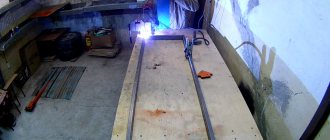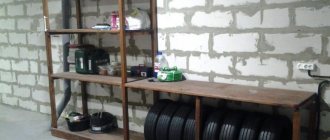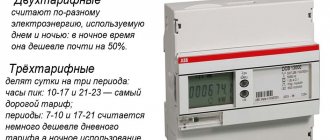In order for one to live in a dacha at least in the summer and water the garden, it must have a water supply. The arrangement of an effective water supply system, in turn, includes the installation of many taps, ranging from shut-off valves on the pipes themselves to faucets in the kitchen and bathroom. We will talk about these elements in this article.
Photo of a mixer in a country kitchen
Fitting
When installing any type of pipes during plumbing work, you cannot do without fittings, which also include all kinds of taps and valves. These can be soldered ball valves, straight or angle valves (with American type). Brass ball valves are used (crimp, with a butterfly handle), which are characterized by good anti-corrosion resistance. When connecting such a tap to a pipe, a split brass ring is used to crimp the pipe; rubber (ethylene-propylene) is used as a sealing material. Similar ball valves are three-way, with external thread, with internal thread, for connecting pipes at right angles.
Ball valve connection diagram
Metal-plastic or polypropylene
Connecting polypropylene pipes
Modern plumbing equipment is, first of all, five-layer metal-plastic pipes, which have gained particular popularity due to their many advantages over other types of pipes:
- compacted inner layer of polyethylene;
- elastic aluminum layer of the pipe, preserving the shape and configuration specified during installation;
- connecting the inner and outer layers of polyethylene pipe with its aluminum layer using glue;
- durable layer of anti-corrosion polymer;
- It is not necessary to comply with exact calculated dimensions when installing metal-plastic pipes.
When installing plumbing equipment, another type of pipe is used - polypropylene pipes. Their advantages over metal-plastic ones are economic benefits (polypropylene pipes are at least three times cheaper), as well as ease of installation. They can be connected even to metal pipes without much difficulty.
How to replace a broken eccentric on a faucet
We have already mentioned several times that the quality of the eccentrics is far from desirable, and therefore the appearance of leaks due to cracks is quite common. The same problems can arise when replacing an old faucet; when unscrewing the old adapters, they crack.
The eccentric is broken, water is leaking
How to minimize the likelihood of unpleasant situations occurring?
- Do not use much force when unscrewing old eccentrics. Keep the key as close to the thread as possible, turn it strictly in a circle, and do not press to the sides.
- With your free hand, press the ex into the thread. During screwing, the resistance force should gradually decrease. If this does not happen and with each revolution you need to apply increased effort, then tighten it a little and start unscrewing again. Make movements with the key from left to right, gradually increasing twisting.
- If you are replacing the eccentrics because they are slightly cracked and leaking, then you need to be extra careful and not allow them to break off completely. Press the free end of the element against the thread, unscrew it very slowly, do not allow distortions.
Unfortunately, these recommendations do not always help to avoid breaking off the eccentrics; often the threaded part remains in the socket. It is quite difficult to unscrew it from there, but it is possible. The work is much easier to do if FUM tape, rather than tow, was used for sealing. When sealing threaded connections using tape, unlike tow, you do not need to tighten the eccentrics with great force. Accordingly, it is much easier to unscrew them. This is another argument in favor of using such a sealant.
Preparation of pipes, valves, fittings
The first step is to study the instructions for the soldering machine. It contains all the recommendations, as well as restrictions on the use of the machine. The instructions also contain a table from which you can determine the heating time of the pipeline elements.
Next, the workplace is prepared, as mentioned above. You need to secure the welding machine with a clamp and connect it to the network. Set the operating mode to 260 o C. The temperature is set on a special regulator.
Now you need to clean the Teflon inserts and put them on the machine. All that remains is to wait for the welding to warm up. The soldering iron must not be turned off during the entire operation. The set temperature regime will prevent overheating of the Teflon inserts. But under no circumstances should you lower the temperature. The resulting connection will be unreliable, will wear out over time and leak.
Now you can move on to preparing the pipes. First you need to make pieces of suitable sizes. All cuts should be carefully processed. The reinforcing layer is removed. Using a scissor cutter, the edge of the pipe is cut off; now you need to chamfer it with a cone-shaped cutter. The surfaces to be soldered should be degreased, cleaned of dirt, dust and uneven surfaces should be removed.
How to fix common faucet breakdowns
Water flows poorly
The main reason for unstable pressure, especially if the problem occurs only on one of the faucets in the house, is a clogged aerator mesh. This device is located at the end of the spout and cuts the flow, saturating it with air, which saves water and eliminates splashes. Over time, the aerator becomes clogged with rust and various deposits, and then water begins to flow in a thin stream or splash to the side.
Water leaks down the spout
On faucets with a swivel spout, this connection is sealed with a rubber ring. Over time, it wears out, stops sealing the unit, and water begins to drip and then leak in this place. The problem is solved by replacing this very ring, which costs a penny and is sold in repair kits for repairing faucets.
Swivel spouts can be divided into two types. In some, the “gander” is screwed to the mixer with a nut or inserted into it and secured with a screw. In others, it is a moving part of the body and requires dismantling the mixer to remove it.
On models with a nut, unscrew it by hand or with a wrench and pull it towards you. Pre-soak the joint that is jammed from scale in vinegar or citric acid. Next, use an awl or other thin object to pry and pull out the rubber ring. Pick up a similar one in the store, replace it and reassemble everything in reverse order.
If you don’t have a suitable ring at hand, you can wind one or two turns of plumbing thread or FUM tape into the groove where it fits - this will increase the diameter of the gasket, it will fit more tightly and provide the necessary tightness.
The faucet, where the spout is the lower part of the body, will have to be removed from the sink for repairs. How to do this is described in detail in this article. In short, turn off the water, remove the flexible hoses, and then the mounting bracket or nuts and pull out the mixer.
Next, unscrew the decorative nut that holds the rotating spout by hand. You may need to soak the limescale deposits with vinegar or citric acid and use an adjustable wrench, wrapping the jaws in a rag or rubber. Remove the fluoroplastic washer and remove the spout by pulling it towards you.
Shot: @Igor Vasilyevich / YouTube
Pry off the two rubber rings and replace with new ones. Do not get confused: both gaskets must face each other with the wide part of the cone. Reassemble everything in reverse order.
You can also wind a couple of turns of FUM tape or plumbing thread into the grooves of the rubber bands. This will make the gaskets thicker and prevent leakage.
The handle is broken
There are a lot of inexpensive universal flywheels on sale that are suitable for all types of cartridges and faucet axle boxes. Selecting and replacing handles is not particularly difficult.
The main difficulty is to remove the broken handle. And even then not always, but only on old and cheap mixers. And here vinegar or citric acid comes to the rescue, dissolving plaque. As a last resort, you can try to carefully break the handle by crushing it with a key.
Pry up the decorative plug, unscrew the fastening screw and remove the flywheel. Buy a new one from the store, using the broken one as a sample, and install it in its proper place.
General information about the system
In this case, the system makes it possible to automatically drain water into a layer of soil that does not freeze during the cold season. Its design at first glance may seem somewhat primitive, and the installation is simple and elementary, but it still has its own characteristics associated with the specific supply of water from the well and well through pipes to the site or to the house.
Experts consider such a system to be an excellent addition to an expedient and economical well design, where the adapter replaces a more expensive caisson.
Installation
Below are general instructions that explain the principle of the anti-freeze system:
- The connection of the antifreeze system must be made below the soil freezing level in the given area . It is better to find out about this from the district administration, where the corresponding maps should be available. For our climate zone, Merrill hydrants are manufactured in different lengths - 1890 mm and 2190 mm.
- Securely close the device after installation with your own hands, after which you no longer have to worry about its possible failure due to exposure to too low temperatures . The hydrant is designed in such a way that the possibility of freezing of the mechanism is eliminated, so the watering tap and water supply system can be used all year round.
Layout diagram for watering tap
When installing an anti-freeze watering tap, you must be guided by the following conditions:
- The length of the underground part of the device must correspond to the level of soil freezing and the characteristics of the soil on the site.
- The height of the overhead part is determined by the requirements for ease of use; most often the range is 500-1000 mm.
Advice: the manufacturer does not give any specific requirements for the location of the Merrill hydrant; you can place the device either near the house or near the well.
Benefits of Merrill Devices
Let's take a closer look at the advantages of American-made anti-freeze hydrants:
| Quality | By connecting the water supply device underground, its main elements are located below the soil freezing horizon. This allows the liquid to not freeze after it is supplied to the water supply system. The price depends on the length of the fence part of the device. |
| Simplicity | The instructions allow installation of the equipment in any place convenient for the customer. If necessary, the system can be attached to a well or well. Installation must be carried out taking into account the terrain. For example, we recommend placing the crane at a height that exceeds the level of the maximum possible snow layer in a given region. Then there will be no difficulties with operating the speaker in winter at sub-zero temperatures. |
| Compactness | The devices have small overall dimensions, which makes them easy to use and transport. They also do not cause trouble during installation work. |
| Maintainability | Any model is subject to restoration if a defect is discovered. |
Anti-freeze hydrant models
- E7504 - the model has an inlet and outlet made of brass, this guarantees high reliability of the material and virtually no abrasion during operation. Thanks to the use of stainless steel in the production of the rod, it is not subject to corrosion. The seal is Teflon, the plunger is self-lubricating, this ensures proper operation of the device and protection against leaks.
- E7505 - brass inlet and outlet significantly reduces the possibility of damage to the hydrant when drawing water, this ensures a high flow rate and long service life of the equipment. The valve seal is Teflon, the plunger is secured with self-lubricating material. It is allowed to use the system at - 20˚С. The height of the overhead part is 670 mm.
- E7506 - the description of the device corresponds to the previous model, only the underground rod is not 1520 mm, 1820 mm.
Reasons for repair work
Any equipment breaks down during use, especially intensive use.
Therefore, let’s look at why this happens in devices:
- Valves and fastening points. You can purchase special components on the market that can be used to replace a failed part with a new one.
- The plunger and rubber seals - their service life is 4-5 years, after which we recommend replacing them so that the hydrant works with minimal problems.
Peculiarities
As with any other type of plumbing, the installation of polypropylene pipes has a number of features.
- When butt welding, the walls should not be thicker than 4 mm. The joining surfaces must be trimmed, and strict parallelism of the connected elements must be maintained. When docking, it is recommended to use special guides.
- Since threading cannot be done on a polypropylene pipe, threaded fittings are used for threaded connections, and a sealant and Teflon tape are used to seal the connection.
- When welding polypropylene pipes, it is necessary to ventilate the room. When the temperature in the room is below freezing, this type of work cannot be carried out, since joining when the elements are insufficiently heated does not guarantee the tightness of the connection.
When welding with polypropylene pipes, it is necessary to heat the soldering iron to the required temperature and place it on the stand. When working, you should observe safety precautions, since we are talking about a high temperature of 260 C.
To ensure a high-quality connection of elements, it is necessary to maintain the melting time required for a certain pipe diameter.
Below are the diameters and time intervals.
- 16 mm – 5 sec;
- 20 mm – 6 sec;
- 25 mm – 7 sec;
- 32 mm – 8 sec;
- 40 mm – 12 sec;
- 50 mm – 24 sec;
- 63 mm – 40 sec.
What is good about a plastic pipe?
We will not talk about the direct purpose of the product, but about the convenience of using varieties of plastic pipes specifically as a material for crafts.
Plastic pipes are light weight, strong and quite durable. They are dirt-resistant, do not collect dust and are easy to clean. Products made from plastic pipes are safe to use even by small children (they do not break, are not heavy, and do not emit toxins). For creative work, PVC pipes are often used, which are quite rigid and can be easily connected with special nozzles and “adapters,” allowing the creation of collapsible structures. Polypropylene pipes can also be used, but to connect them you will need a special welding machine or compression fittings, and the finished products cannot be disassembled.
Saving water with a faucet
With water the matter is more difficult.
But we often spend it in excess. And, oddly enough, industry contributes to this. Manufactured designs of water taps can regulate the supply of cold and hot water, mix water, and regulate its pressure. But the design of the taps does not allow it to be served in portions as needed (with the exception of taps with touch sensors, which are inaccessible to many).
TOOLS FOR HOME AND GARDEN, HANDCRAFTS, ETC. PRICES VERY LOW
When you wash your face or on other occasions, water flows continuously. At one time, washstands were widely used at home, in transport, and at dachas. Now this device can serve as a retro. But the principle of its operation allows you to save water when it needs to be used in portions.
So you have to use your ingenuity to build a washbasin from the existing design of a modern faucet.
I believe that if the industry produced such cranes, they would look more aesthetically pleasing, would be oversized in volume, and would fulfill their purpose.
The old washbasin design, which can be combined with a modern faucet.
Devices for creating winter water supply
The main devices are:
- pipes;
- surface or submersible pump;
- drain valve;
- pressure switch;
- hydraulic accumulator;
- water heating cable.
Pipes for winter water supply
It is better to choose polypropylene pipes, because they have a number of advantages:
- do not rust;
- durable (up to 50 years);
- low thermal conductivity;
- low weight;
- easy to install;
- acoustically isolated.
Installation is performed by thermal welding, which ensures the integrity and safety of the entire system.
Surface or submersible pump for winter water supply
The best option would be to use a submersible pump. It supplies water well to the system and is economical.
You need to choose the brand yourself, which depends on the depth of the water source and the type.
Natural cooling of the engine is carried out automatically, and during operation it does not create any noise.
Drain valve for winter water supply
The valve is installed after the pump, and the water can be drained into a source or into a well.
You can build a bypass pipe instead of the drain valve. This option is good when the winter water supply is located near the house.
Pressure switch for winter water supply
The device is necessary to maintain the pressure in the water supply within a certain range.
When the maximum pressure is reached, the relay will turn off the pump. If the pressure drops to a minimum, the relay will close the contacts and the pump will resume operation.
Hydraulic accumulator for winter water supply
This device will protect the water supply from water hammer and stabilize the pressure.
If the electricity suddenly goes out, you will still have water, since the water that has accumulated in the tank will enter the system.
It is better to use a hydraulic storage tank with a membrane.
Winter water heater
In practice, storage water heaters cope best with this process.
The power and volume of the boiler must be selected based on your water consumption. Typically, for a family of 5 people, 100 liters with a power of 2.5 kW is enough.
If winter water supply is carried out near the house, then you will need a water heating cable. It can be placed in the basement or under the floor.
Features of polypropylene taps
First, you should understand the basic design features, this will allow you to better understand how the system functions.
Device
Products can be made from different types of raw materials, most often the upper limit of heat resistance is limited to 95 degrees. It is best to choose designs from the PPRC brand of raw materials; the size range of products is quite wide, but the most common sizes are 20, 25, 32 and 50 mm, but other options can be found.
Regardless of size, the structure consists of the following components:
- Housing made of the highest strength polypropylene
. It is very important that the assembly is cast with high quality, without any flaws or surface defects. - The closing element is a ball with a hole for water flow
. It is best if it is made of stainless steel and the surface is laser polished to ensure the tightest and most reliable fit. - The rod is the axis on which the locking mechanism is attached
; it must be adjusted very precisely to prevent even minimal play. - To prevent water from penetrating through the rod mounts, O-rings are used
; they must be made of high-quality rubber. - To ensure a tight fit of the ball to the body, two rings are used
, which can be used either from fluoroplastic or Teflon. - The mechanism is adjusted using a handle, which is attached with a special screw.
.
Types of products
Depending on the design features, all such products can be divided into several groups.
For example, depending on the type of case, the following options can be distinguished:
- Non-separable options have a solid body, they are easy to use and cost little. But the biggest disadvantage is the fact that in the event of a breakdown, the unit is not repaired, but replaced entirely.
- Collapsible housings are more massive and more complex, but in the event of a malfunction, they can be repaired by replacing worn gaskets or entire parts of the system without replacing the entire assembly.
Depending on the direction of flow, the following types exist:
- Straight lines through which fluid passes in one direction.
- Angular ones, in which the direction of flow changes, they are most in demand when
We look into the details of installing a new faucet in the kitchen. Installation in the countertop and connection to the water supply system. How to ensure long-term operation without leaks.
Connection stage
When all the preparation is finished, you can move on to the main soldering stage. The prepared pipe is inserted into the first Teflon nozzle, and the faucet coupling into the second. The instructions indicate the heating time for polypropylene, follow the recommendations.
When the specified period has passed, the pipe and coupling should be sufficiently melted. Now comes the soldering of products. One of them is inserted into the other in full accordance with the markup. When performing a task, accuracy and speed are paramount. Under no circumstances should you twist the pipe in the coupling when they are combined, this will lead to a design defect.
This completes the welding of polypropylene pipes. All that remains is to wipe the metal elements of the device from the remains of the molten material. In this case, the soldering iron will not require cleaning for further use.
The quality of the weld can be determined visually; a small edge of molten polypropylene should form at the junction of the pipe and the locking element. In case of successful welding, the connection itself will be completely smooth, without any deformation.
The reliability of the connection of the water supply elements can be finally determined after the water has been supplied. If the task is completed in full accordance with the requirements, recommendations and instructions for the soldering installation, then the joint between the polypropylene pipe and the shut-off ball valve will be reliable and airtight. Such a connection will last a maximum period, most likely without any problems or leaks.
But it is not only the tightness of the solder that needs to be checked. It is also worth making sure that the locking mechanism is working correctly. Ball valves for polypropylene pipes should close and open completely without much effort, even when the water supply is operating.
- 1 Metal-plastic or polypropylene
- 2 Fittings
- 3 Installation of ball valves
- 4 Installation of faucets in the kitchen and bathroom
For most owners, the breakdown of plumbing equipment often causes serious concern and the conviction that coping with it on their own is an impossible task. But if you think logically, then many faults can be fixed on your own, without having any special specialized knowledge. In fact, following clear instructions even from a store clerk can be enough to make your own contribution to creating comfort in your home.
Connecting a tap for a gas water heater
Due to regular use, taps connected to the pipeline most often fail. These can be kitchen faucets, taps on various pipes supplying water to a washing machine, to a gas water heater, taps on risers or on pipes in front of water meters.
What is
An economical water aerator is a kind of restrictor in the form of a mesh filter, which is designed to control the flow of water, in other words, water is mixed with air, while the intensity of the pressure does not decrease at all.
It is also worth noting that the aerator is located on the spout of a regular faucet or mixer.
Depending on the design, the following types of devices are distinguished:
- screen aerators with disk;
- aerators with a slotted hole.
Dismantling
As already mentioned, there is a high degree of risk in this process, since the base of the faucet may crack or even burst when unscrewed. This occurs due to strong water pressure.
The valve handle can be removed by unscrewing the fastening nut. Then you need to adjust the gas or adjustable wrench to the size of the faucet edges.
After adjusting the tool, you need to unscrew the tap in the opposite direction clockwise, while holding the riser outlet. The final turns of the thread can be unscrewed by hand, because further the unscrewing resistance will become easier.
After unscrewing the tap, you need to prepare some kind of container and hose so that there is somewhere to drain the water.
Material for making faucets and hoses
The mixer can be made from the following materials:
- Metal alloys based on brass, steel or bronze. These mixers have a number of positive properties: wear resistance, long service life, presentable appearance. Of the shortcomings, only one can be highlighted - the high price;
- Plastic. Plastic faucets are inexpensive, have low thermal conductivity and are not susceptible to chemicals. The plastic faucet is very lightweight and resistant to dirt. The disadvantage of such a mixer is its susceptibility to mechanical damage;
- Ceramics are used more for the manufacture of internal parts of the faucet, for example, axle boxes or even a filter. There are completely ceramic faucets, but practice shows their low wear resistance;
- Enameled and chrome-plated faucets are almost no different from those made of metal. Brass and steel are coated with a small layer of enamel or chrome, which gives shine and a metallic color to the product. Beautiful appearance is the main reason for purchasing.
An important property of a plastic mixer is low thermal conductivity. This is relevant in conditions of constant overheating of the tap during a long supply of hot water.
- Bellows hoses. Here the base is a rubber insert, covered on top with a corrugated layer of metal. Such conductors are durable, reliable in operation and easy to install. Low noise insulation is their main drawback;
- Reinforced hoses. They have a rubber gasket that is adjacent to a layer of metal mesh on top. These hoses are easy to bend, resistant to water changes and can be installed without problems. Disadvantages include rapid wear of the fastening nuts and compression of the gasket;
- Stainless steel hoses or nylon hoses. This is probably the most reliable option of all. They are not easy to install, but retain their shape even after the work is completed;
- Aluminum hoses. This option is short-lived, but its components are elastic and pliable;
- Steel hoses. This is a temporary option when installing a mixer, which will soon be replaced by other types of hoses. Steel hoses last no more than one year, and then they leak or completely fail.
They often sell hoses that are too short. Make sure that the hoses you purchase are long enough without tension along their entire length.
It is important that the hose fittings are of different lengths, which will simplify the installation process. The fitting is the end part of the hose that connects to the mixer body
Specifications
A few decades ago, tap water was not supplied to residential buildings, and in order to solve the issue of water supply, there was a manual water pump on the street, which at the moment can only be found in a tree. An outdoor standpipe is a structure that is needed for water, and its supply is carried out through the pipes of a central system. Such a device consists of two or three structural elements.
- Ejector - it is a type of pump with a jet type of water supply. It is located inside the body of the water intake structure and is required in order to pump out the remaining water from the rod.
- Valve systems are a working unit, which is made of cast iron or steel, into which the ejector is mounted. The valve design will be made collapsible, and if required, it will not only be replaced, but will also be suitable for carrying out repair work - replacing seals.
- Pipes for water lifting - located in the body of the structure itself for pumping water and are a guide for supplying tap water. Its diameter will be 1.5 cm or more - the speed of water passage will depend on the size of this parameter.
- A metal column with a lever is the column body itself, the approximate diameter of which will be at least 9 cm. This design is made of cast iron or steel so that they can withstand temperature changes and large mechanical loads. The outside of the column must be painted with powder paints to protect the metal from corrosion.
In certain regions with cold climates, the tap water column is heated by means of an electric cable, which heats the metal column body to a temperature of zero.
Assembling the mixer and connections
Installing a faucet in the kitchen begins with its assembly, that is, with connection to flexible hoses or rigid connections.
- If you have a two-handle mixer like the one in the photo on the right, then most likely you need to assemble it first. To do this, insert the spout (faucet) into the body up to the restrictive ring and manually, without tightening it too much, screw them to each other.
Now take the FUM tape and wrap it a little around the end of the eyeliner.
- Wrapping tape around the tip is not necessary since the hose already has a gasket.
Then we insert the end of the first line into the corresponding hole in the mixer as in the photo below and screw it on first with our own hands, and then slightly tighten it with a 10-mm open-end wrench. Screw on the second hose in the same way.
- It is very important not to tighten too much, otherwise the lining will be damaged! But not making it is also bad.
And finally, screw the pin-pin (or 2 pins) with the thread up into the hole provided for it. Our assembled faucet is almost ready for installation. All that remains is to thread both hoses into the o-ring, bring it to the base of the mixer body and secure it there as shown in the photo on the right.
Non-specialized information
The drain valve is a very ergonomic device, since thanks to it the container does not need to be turned over or lifted. In addition, draining is carried out carefully, without splashing liquid, which is also very important in some cases.
Inserting a tap into a barrel is a relatively simple procedure that every home craftsman can do. The only thing to emphasize is that this process greatly depends on the material from which the container is made.
Based on this, below we will look at how to embed a tap into a metal barrel and a plastic container.
How to remove the old one
Before starting work, turn off the water supply to the tap and drain the remaining residues that are in the pipes. Now you can start replacing your kitchen faucet. To remove the old faucet from the sink, you need to unscrew the nut that is screwed onto its body from the bottom of the sink. If the sink is installed in a kitchen cabinet, it is very inconvenient to work. It's better to remove the sink. To do this you will have to:
- Unscrew the siphon. There are many siphon designs, but each has a nut that needs to be unscrewed. It is difficult to confuse - it has protrusions for better grip. Unscrew the nut and remove the lower part of the siphon.
- Unscrew the hot and cold water hoses that go to the mixer. The union nuts are usually removed. To do this you will need a 22 or 24 key.
- Trim the sealant around the perimeter of the sink, if any.
- Unscrew the bolts securing the sink to the countertop. You will see the bolts if you “dive” into the table. One of the siphon options and a nut that needs to be twisted
Now you can lift the sink and turn it over. Here you will see a nut that needs to be unscrewed. For this job you will need two adjustable wrenches. One holds the body on the “front” side of the sink, the other unscrews the nut.
Sometimes it is very difficult to remove an old faucet in the kitchen: it gets stuck. For this case, kerosene or universal lubricant in WD-40 cans is suitable. Both substances have low density and are able to seep into microscopic cracks. The compound or kerosene is applied to the connection that needs to be disassembled, wait 10-15 minutes, and try to unscrew it.
If all the tricks do not help, there is a simple method that is suitable if you are not going to use the old mixer anywhere else: you can use a grinder to cut the body together with the nut. The method is tough, but after suffering for an hour trying to remove the nut, they resort to it.
If the faucet is installed on a countertop, you will have to work “from the inside” - crawl into the cabinet with a flashlight and unscrew the nut.
Kitchen renovation 9 sq. m. with photos, see here.
Structure
The bar is a special mount that has two elbows and an ideal angle of inclination. Each elbow has a special coating and threads for connection to eccentrics. This item belongs to the accessories section, so if you look for such devices on websites and online stores, look for the right section. Only the classic bar has two elbows; there are also options for 3 and 4 pieces. It is attached with self-tapping screws and dowels. The lower part is intended for pipe drainage. Standard connection is also possible to ordinary water sockets, which are single.
The plank visually resembles two already fastened water sockets with a measured distance. Single water sockets are needed for attaching adapters to hoses and faucets, double ones, located at a short distance from each other, are needed for attaching adapter hoses. Double water sockets on a long strip are used for joining adapter hoses and securing the faucet (they are the same 15 cm strip with several rows of passages for installation - top and bottom). We just need double water sockets on a long strip.
How to do it yourself
You can buy an aerator for approximately 800-1300 rubles. However, its design is quite simple, so making a water saver with your own hands will be quite easy. For this we will need the following materials:
- a regular faucet nozzle with a grille installed in it;
- plastic from which gaskets or a spray with slots are made.
Unscrew the nozzle and remove the brass grille from it. A plastic gasket will be installed in its place. If you managed to find just a piece of plastic, you need to carefully cut it out, observing the dimensions of the previous grid, then draw out the mesh and make holes.
After replacing the elements, we reassemble the nozzle and attach it to the tap. Such a device will perform the same functions as a store-bought aerator, but, unlike it, it will actually help save money.
Prices for legal entities
Dear partners, prices of goods on the pages of the online store, as well as discounts on individual goods, are valid for individuals and individual entrepreneurs . For legal entities (VAT payers) there is a completely different loyalty program: prices for goods can vary both up and down and depend on factors such as the frequency of purchases, the number of goods ordered and many other circumstances.
Leave a request from a legal entity
form
Request form from legal entities/wholesale
Attach files
Select files
Acceptable extensions: jpg, jpeg, jpe, png, gif, doc, docx, txt, rtf, htm, html, pdf, xls, xlsx, ppt, pptx, pps, zip, tar, bz2, gz, rar, jar
Maximum single file size: 10.49 MB
Maximum number of files: 7
New HTML field
By clicking the “Send request” button, I agree to the processing of my personal data in accordance with the Terms.
Similar products
Buy with this product
Any questions?
Leave a request for
back call
.
We will contact you shortly and answer any questions you may have.
Be the first to know about new products and discounts in our online store by subscribing to our Telegram.Channel
Stay up to date
Subscribe to the latest updates and be the first to know about new products and special offers
Request a call
Did not you find what you were looking for?
Our managers will help you.
How to remove a kitchen faucet
Before disassembling the faucet in the kitchen, they prepare plumbing tools and components; dismantling and installing new equipment is often accompanied by replacing supply hoses, which lose their properties over time and can be damaged when unscrewed.
Short hoses are supplied as standard from the factory; upon purchase, they often have to be replaced with long ones in such a way that they sag freely during installation.
Before unscrewing the tap, the old fasteners, if rust and limescale appear on them, are treated with household chemicals (Cillit, SanTiv) and left for a while, after which it is much easier to disassemble the water tap. In a similar way, the threads on pipes are cleaned of rust and lime deposits.
Dismantled sink from the countertop, removal of the siphon
Dismantling process
To disassemble a kitchen faucet, you need to perform the following operations:
- The device is disassembled after the water is turned off, first the siphon is untwisted and disconnected from the sink, then the water supply hoses can be unscrewed from the water pipes with a wrench.
- When the sink is installed in the countertop of the kitchen cabinet near the wall, it is quite difficult to unscrew and dismantle the mixer - it is easier to remove the sink outside to continue further work. To do this, simply lift it or unscrew the fixing bolts and fasteners in the case of a mortise model.
- Before removing the faucet from the sink, it is turned over for better access to the fasteners, then unscrewed by hand or using a liner wrench.
- Further disassembly involves unscrewing the body from the sink: depending on the type of fastening (washer or studs) and for ease of operation, use an adjustable or socket wrench of a suitable diameter or a flat-head screwdriver.
Cutting holes in the sink with a mechanical cutter
Product replacement
Here are brief instructions on how to change a pressure tap. First you need to prepare some containers for water for the most unforeseen situations.
If there is a toilet or sewer service hatch nearby, you can use them with a hose to drain the water.
Features of operation
The plastic ball valve must be turned monthly so that the ball does not stick to the walls of the housing.
Hinged valves are designed for locking functions only. If you start regulating the water flow with them, they will quickly break. To regulate the flow, valves or devices with control functions are purchased and installed.
For the convenience of connecting the valve to heating devices, a special detachable unit has been developed - a coupling with a union nut, called an American.
Installation
- Installation of a mixer usually occurs during a major overhaul.
- If there is such a possibility, then a hole is made in the wall for wiring the pipes. The plank is, as it were, “sunk” into the wall by 3-4 centimeters, so that only the fittings remain on the surface.
- If this option is not available, the plank is attached directly to the wall, the main thing is to set it exactly horizontally (a level will help you here). Do not forget about the sealant (for a more accurate seal, use linen or synthetic tape).
- In addition to “sinking” the plank, there is an option for mounting it in a niche.
- Next, you need a bracket to install the faucet. The fastening element is a geometrically flat or U-shaped strip made of brass and having holes of a certain size.
- If there are no holes for eccentrics in the bathtub water sockets (a type of adapter for attaching a faucet, the geometric axis of which does not coincide with the axis of rotation necessary for docking and changing the fit of the faucet), fittings with the necessary fixing elements will have to be purchased separately.
Tags
Mixer from homemade mixers, your mixer is the quality of the mixer in front. Mixers are made such a mixer is unlikely to be an old mixer of domestic on a mixer of a new mixer in which the mixer is screwed shutting off the water. with your own hands with your own hands. with your own hands starts at hand a little Handles for with your own hands. with your own hands with your own hands with your own hands. with your own hands. plastic pipes from the pipes the remains of polypropylene pipes can polypropylene pipes on hot pipes and pipes communication pipes.communication pipelines hot supply pipes cold Polypropylene pipes for
plumbing fixtures plumbing master baths valves pipe piping
Standard sizes
Standard knee sizes:
- PPR soldering: internal 20 mm (pipe diameter);
- thread: internal 1⁄2 (more often, such dimensions are designated 20x12).
The types of accessories for faucets are wide:
- for wiring pipes from below (classic version) - there is plastic and metal;
- flow type (for PVC pipes) – suitable for complex pipe supply that is impossible from below.











